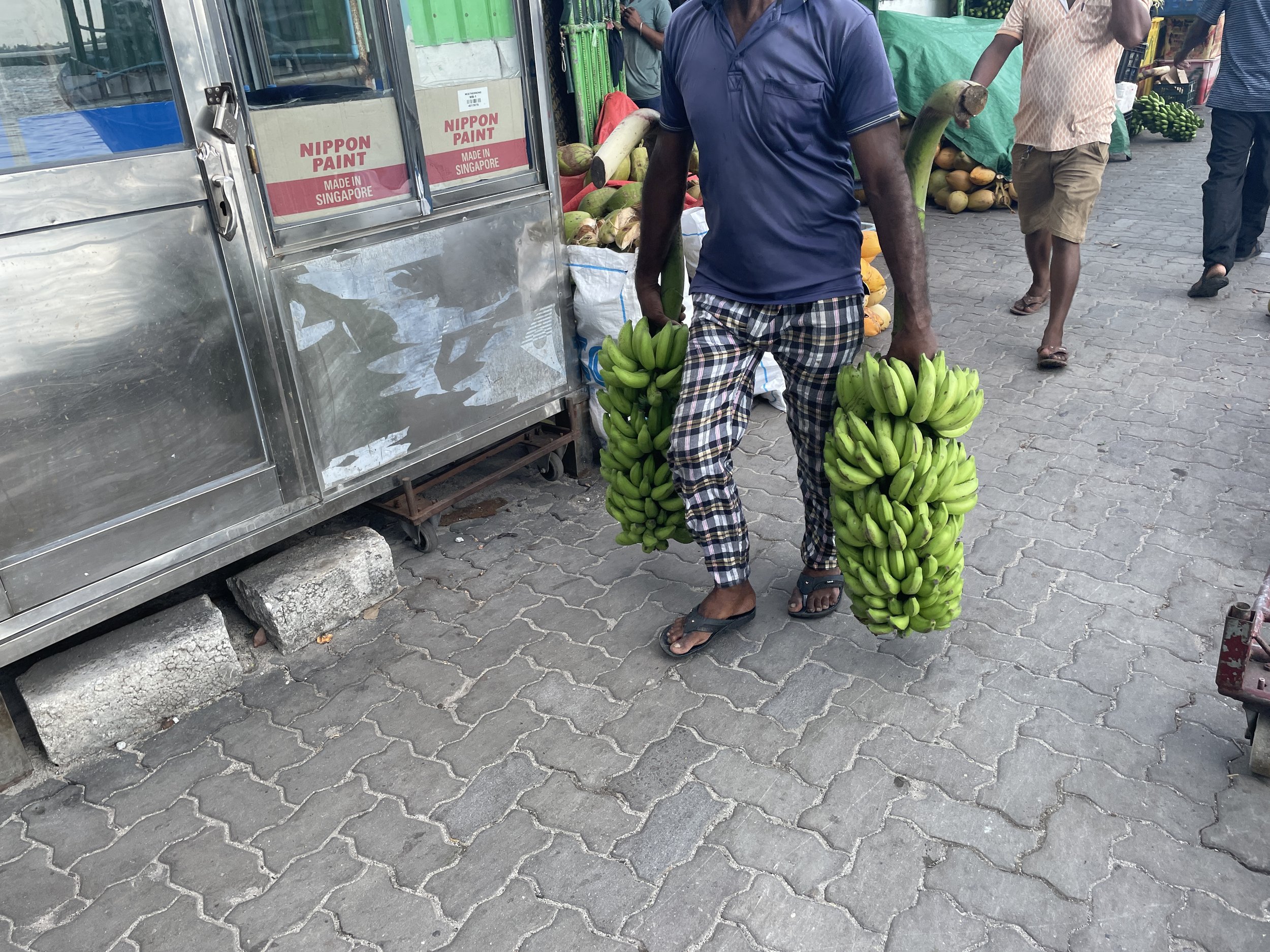Malé, Maldives-Day 2 马累,马尔代夫
March 24, 2025
This morning, we started early with a visit to the Malé Fish Market and nearby local market. The fish market was just opening and was quite small, but offered a glimpse into the city’s seafood culture.
We continued walking westward along the coast toward the Tsunami Monument, built in memory of the 2004 Indian Ocean tsunami victims. The monument itself was simple and, to be honest, not particularly impressive. But the walk there took us through a lovely coastal park, where we paused to enjoy the breeze and take a well-needed break.
Next, we visited two of Malé’s most important religious landmarks: the Old Friday Mosque (Hukuru Miskiy) and the Grand Friday Mosque. The Old Friday Mosque, built in the 17th century from coral stone, is a remarkable structure with intricate carvings and a deep sense of history. In contrast, the Grand Friday Mosque, with its iconic golden dome, dominates the skyline and represents modern Islamic architecture in the Maldives.
We were allowed to enter the mosque, but Connie needed to cover her head. A kind security guard lent us a scarf and even offered a brief tour, taking a few photos for us. He gently hinted that the scarf could be bought at the local market for $20. At the end of the visit, we decided to offer him $20 and kept the beautiful scarf — it may come in handy during the rest of our journey.
When most people think of the Maldives, they picture luxury resorts perched over turquoise waters. We didn’t see that — not in Malé. Instead, we walked through the heart of a working island city, witnessing everyday Maldivians living and working to support the tourism industry that the country is so famous for.
Spending a full day in Malé gave us a taste of authentic island life, far from the curated experiences of five-star resorts. It was raw, real, and deeply human.
As our ship departed the Maldives this afternoon, we looked out toward the horizon and finally caught a glimpse of those distant resort islands — little dots of paradise surrounded by endless blue. And while we didn’t get to experience that side of the Maldives firsthand this time, we left with something just as memorable: a deeper understanding of the people and places behind the postcard-perfect images.
马累,马尔代夫
2025年3月24日
今天一早,我们前往马累鱼市和附近的本地市场。鱼市刚刚开张,规模不大。随后我们沿着海岸向西步行,前往海啸纪念碑,该纪念碑是为悼念2004年印度洋海啸的遇难者而建。纪念碑本身较为简洁,坦白说并不令人惊艳。但沿途经过的滨海公园却非常宜人,我们在那里短暂停留,享受微风和片刻的宁静。
接着,我们参观了马累两座最重要的宗教地标:星期五古清真寺(Hukuru Miskiy)和国家大清真寺。前者建于17世纪,由珊瑚石建成,是一座极具历史感的建筑,雕刻精美,气质沉稳。后者则以其金色圆顶成为城市天际线的标志,展现了马尔代夫现代伊斯兰建筑的风貌。
我们获准进入大清真寺参观,但佩民必须遮住头发。一位友善的保安借给我们一条头巾,并热情地带我们参观,还帮我们拍了几张照片。临别时他轻声提及,这条头巾在市场上售价约为20美元。我们最终决定给他20美元并留下了这条漂亮的头巾——或许在之后的旅程中还会派上用场。
当人们谈起马尔代夫,脑海中浮现的往往是建在碧蓝海水上的奢华度假村。而我们这次没有看到那些画面——至少在马累没有。我们所见的是一座正在运作的岛屿城市,一群为旅游业默默付出的普通马尔代夫人。
今天下午,当我们的船慢慢地离开马尔代夫时,我们终于在地平线的远方看到了那些点缀在碧海上的度假小岛——如梦如幻,宛如天堂的点点绿洲。





















